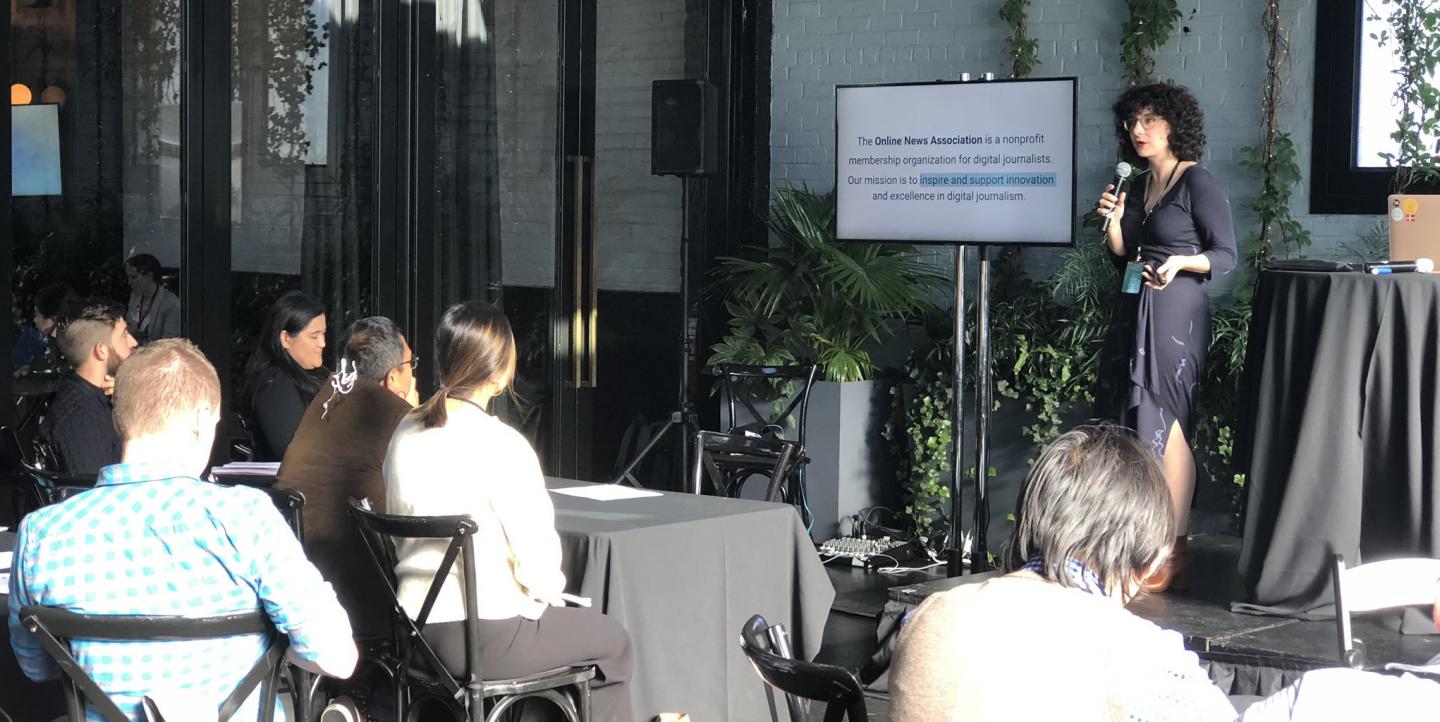The first Engagement Innovator Summit sold out well before it got underway this week in New York — a testimony to its unconventional approach as a journalism event.
It included open discussions, interdisciplinary sessions by non-journalists, diversity stipends and free childcare.
Conference co-organizer and Hearken co-founder Jennifer Brandel told IJNet her goal that the Summit redefines “engagement” with audiences and communities.
IJNet: “Engagement” is a pretty overworked word in journalism – it can mean anything from having someone click on your story to co-creating content with members of the audience. What does it mean for you in the context of this event?
Brandel: Right now, engagement means different things depending on how you position the public. If you're positioning them as a consumer, you're looking at engagement through the lens of clicks, likes, shares, depth of scroll and all that. If you're looking at the public as a co-creator, you're looking for the quality and the depth of a relationship. And if you look at the public as a shareholder, you're looking at engagement around whether they are signing up for newsletters, giving you information, contributing and subscribing to your content.
We are entering a new era in which our language will hopefully become much more sophisticated as we start to see the nuances between types of engagement. The Summit is there to teach people proven strategies that can fall under the bucket of treating the public as a partner and treating them as an equal — not as an audience or a consumer.
Our goal is also to have people learn strategies that they're excited about applying, and not end up in the post-conference slump — which I've experienced a lot — where you have a great notebook full of ideas that sits on your desk or in your backpack and collects dust that you're never able to actualize. The last session of the event [was] about creating a pitch deck for your boss or colleagues so you can get them on board and actually get going.
What are the main themes of the Summit?
We felt there were three themes that were missing from other journalism conferences. First, to improve the art of listening. It’s easy as a reporter to assume you know how to listen because that's part of your job, but we're teaching a few different ways of listening, like qualitative listening that community health workers do, or listening to community through data.
Second, we’re looking at engaged elections — trying to help newsrooms avoid “horse race” coverage for elections and instead do something that is more public-powered or audience-centric, rather than just following what politicians are saying.
For the third track, [we talked] about adjacent industries and what we can learn about engagement that I hope will help cross-pollinate into journalism.
What do you hope participants will take away from those interdisciplinary sessions?
Every organization, whether it is for-profit or non-profit, is trying to provide a service that is of value to someone. So how different industries think about the people they're serving — how they engage them, how they treat them, how they follow up with them, how they collaborate, and who they collaborate with — there’s a lot to learn from industries that are doing better [at some of these things] than journalism.
These sessions [included] one from community health workers who go out and listen to people's stories and help them navigate the medical system and save money. Another session [looked] at what journalism can learn from professional sports teams, because sports fans are some of the most highly engaged people. We also [had] an art historian who teaches doctors about how to observe paintings so they can learn to make better decisions in times of great ambiguity and be more observant.
Accessibility is a big priority for the conference. You offered free childcare and stipends to support presenters and people from diverse backgrounds. Will you tell us about these?
We were inspired by a great conference called SRCCON, because they’ve always had childcare and we wanted to do the same. Quite a few people have taken us up on it.
Presenter stipends are there because many conferences don't allow any budget for this, and to me that feels really extractive since presenters are helping you put on an event. For presenters from outside New York who didn't have a place to stay, we [offered] a little bit more as a token of saying thank you for putting time and effort into this value generation for a lot of people.
The diversity stipends were provided by Hacks/Hackers to support a handful of people who otherwise couldn't come. I wish we had more sponsors or supporters who could offer more stipends because we did have more people request them than we were able to grant, but I'm glad we're able to offer some support this year and hopefully more in years to come.
Teachable resources and slide decks from the conference sessions will be available for download on the Hearken website approximately one month after the conference. Follow them on Twitter to find out when these are available.
This interview was edited for clarity and length.
Main image courtesy of Jennifer Brandel.

